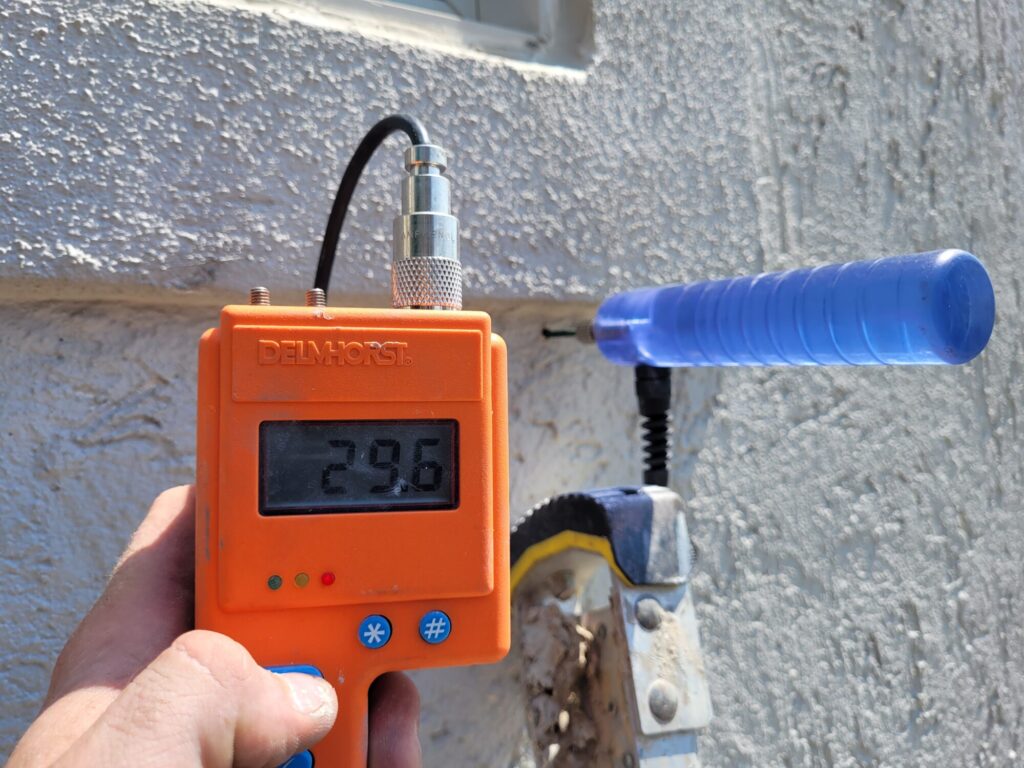Stucco is a popular exterior finish known for its durability, versatility, and aesthetic appeal. However, one significant issue that homeowners may face is moisture intrusion behind stucco. This hidden problem can lead to severe damage to your home if not addressed promptly. Understanding why moisture behind stucco is so detrimental and how to prevent it is crucial for maintaining the integrity of your property.
The Nature of Stucco and Moisture
Stucco, when properly applied, serves as a durable and relatively water-resistant exterior finish. However, its effectiveness largely depends on the underlying layers, including moisture barriers, lath, and the stucco mix itself. Moisture can find its way behind stucco through various means, such as cracks, improperly sealed joints, and faulty flashing. Once moisture penetrates these barriers, it can cause a host of problems.
The Dangers of Moisture Behind Stucco
1. Structural Damage:
- Rotting Wood: One of the most severe consequences of moisture intrusion is the rotting of wood framing and sheathing. Wood rot compromises the structural integrity of your home, potentially leading to sagging floors, warped walls, and even collapse in extreme cases.
- Corrosion: Moisture can also lead to the corrosion of metal components, such as fasteners, which are essential for holding the structure together. Corroded fasteners lose their strength, further weakening the building.
2. Mold and Mildew Growth:
- Health Hazards: Moist environments behind stucco are perfect breeding grounds for mold and mildew. These fungi can release spores into the air, causing respiratory issues, allergic reactions, and other health problems for the occupants.
- Odors and Stains: Mold growth can also cause unpleasant odors and unsightly stains, both inside and outside the home.
3. Insulation Degradation:
- Reduced Efficiency: Moisture can degrade insulation materials, reducing their effectiveness. This can lead to higher energy bills as your heating and cooling systems work harder to maintain a comfortable indoor temperature.
- Condensation Issues: Wet insulation can cause condensation issues, further exacerbating moisture problems and leading to additional damage.
4. Aesthetic Damage:
- Cracking and Blistering: Moisture behind stucco can cause the surface to crack and blister. These issues not only detract from the aesthetic appeal of your home but also create entry points for more moisture, perpetuating the cycle of damage.
- Discoloration: Water stains and efflorescence (white, powdery deposits) can appear on the stucco surface, making the exterior look neglected and poorly maintained.
Causes of Moisture Intrusion
Understanding the common causes of moisture intrusion behind stucco is essential for prevention:
- Cracks and Gaps: Over time, stucco can develop cracks due to settling, temperature fluctuations, and physical impact. These cracks provide pathways for moisture to penetrate.
- Poor Installation: Improper installation of stucco, flashing, and moisture barriers can leave vulnerabilities where moisture can seep in.
- Inadequate Drainage: Homes without proper drainage systems can experience water pooling around the foundation, increasing the risk of moisture seeping into the stucco.
- Faulty Sealing: Windows, doors, and other openings that are not properly sealed can allow water to enter behind the stucco.
Prevention and Mitigation
To prevent moisture problems behind stucco, consider the following steps:
- Regular Inspections: Conduct regular inspections of your stucco exterior to identify and repair cracks, gaps, and other potential entry points for moisture.
- Proper Installation: Ensure that stucco is installed correctly by hiring experienced professionals who follow best practices and manufacturer guidelines.
- Effective Drainage: Implement effective drainage systems to direct water away from the foundation and prevent pooling.
- Sealing and Flashing: Ensure that all windows, doors, and other openings are properly sealed and flashed to prevent water intrusion.
Conclusion
Moisture behind stucco poses a serious threat to the structural integrity, health, and aesthetic appeal of your home. By understanding the dangers and causes of moisture intrusion, homeowners can take proactive steps to prevent and address these issues. Regular maintenance, proper installation, and effective drainage are key to safeguarding your home from the hidden dangers of moisture behind stucco. If you suspect moisture problems in your stucco, consult a professional to assess the situation and recommend appropriate solutions to protect your investment.

